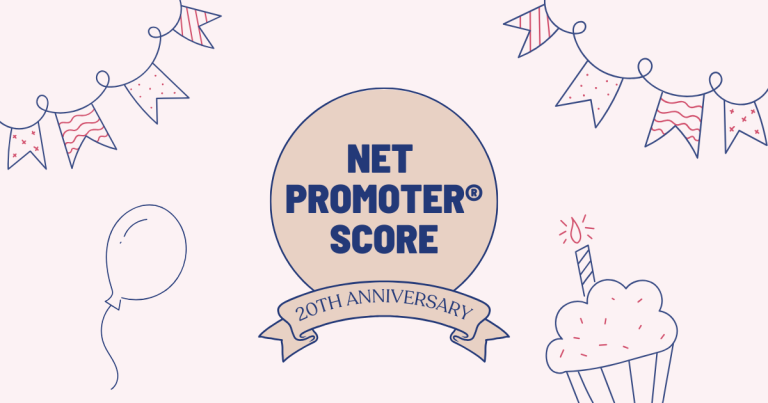Customer Service Leaders work in a high pace environment. They need to make quick decisions regarding people, processes, technology, and work cross-functionally with other business units to keep up with anything that may impact service levels. One metric that Customer Service Leaders constantly monitor is ticket volume and even if it might sound like a vague metric, it has more below the surface once you start digging.
Customerthink describes ticket volume as one of the ten most essential metrics when evaluating customer service performance. They mention that ticket volume measures the total number of conversations in your support inbox. It gives you the number of customers that need help regularly and information on if and how the product or support changes decrease or increase the ticket volume.
High ticket volume = recruiting more agents?
Some might think that high ticket volume would mean inefficient customer support or a need for recruiting more valuable customer service agents. It can be a mix of issues & symptoms, and one important thing is to break down the ticket data.
What type of tickets does your customer support generate the most? Do the tickets tell you common product issues or valuable information about misleading marketing? Is there any kind of seasonality in the tickets, for example, Black Friday, holiday sales, or new product release? Of course, you need to have enough agents and hire extra hands when appropriate.

Ready to dig a little deeper? Let’s go over each suggestion together, and you’ll learn how to make monotonous ticker numbers valuable and inspirational.
1. Discover patterns, trends, and phenomenons of particularly busy or quiet seasons and plan staff based on that information.
As mentioned earlier, certain specific days like Black Friday might attract more people to your service or website and drive more customer requests. This is due to marketing activities, holidays, product launches, etc. It is crucial to understand these patterns upfront to plan your resources accordingly.
2. Research tickets to find out common problems and issues.
What information can you find in ticket categories? Is there a category that singles out measured in ticket volume? And if there is, what is the reason for that? What is the root cause of these issues? These questions you need to ask yourself and look for the low-hanging fruits.
3. Train and coach your agents to complete common issues with ease.
Empowering your customer service agents through coaching and training is important to maintain and develop customer service agent know-how and skillsets.
This way, every customer encounter will proceed more efficiently and supportively. As a Customer Service Manager, ensure that your agents have easy access to company instructions and databases. This way, you can empower agents to help customers without follow-up contacts.
4. Talk with the product development and marketing teams
Are there any insights in the tickets or common issues that could be dealt with an easy fix? One fix in the product could significantly reduce the number of tickets. Certain marketing efforts might cause a spike in customer service. We all love examples:
- “Two for the price of one” campaign causes a spike in customer service when certain customers cancel their orders. This is because they made the purchase before the campaign and now want to get that “two with the price of one”.
- Price change to the product without proper communication. Customer service starts to receive questions from the customers, and ticket numbers go up.
As a Customer Service Leader, you have an excellent knowledge of how your customer feels about your business. With the help of data, you bring great insight to Marketing and Product teams on how specific activities and product features affect customer service experience and customer loyalty. Remember that five bad customer experiences mean one lost future purchase event!
5. Update your knowledge base with the most common questions answered to reduce repeating contacts
If customers can figure out the problem with the help of a knowledge base, they will be more unlikely to contact customer support. You can even build a community for the knowledge base to find new valuable content. You can also reward the most active community members, whether they are your employees or customers.
First Contact Resolution is important when talking about repeating contact. Read our blog on how much you will save time and costs when improving FCR. If you want to take it to the next level, check out FCR calculator and see it for yourself.
6. Consider adding new resources
Recruitment is not always the easiest solution, and usually, you need to argue the business case for a new employee. Add some extra effort to the recruitment process so that you get the best possible agents. If you do this recruitment blindfolded – you might be in a situation where your recruited agent does not meet expectations, and churn happens.
Resources in customer service are often very limited. It is not for granted that you will get a good agent to fill the void in your team. The solution (in some scenarios) might be setting up a chatbot to process some of the daily chores instead of hiring a new agent.

That’s it! Just keep in mind that although ticket volume in customer service does not tell the whole story, it is still one of the most important metrics that need your attention regularly. So, schedule yourself, e.g., a monthly check for the numbers to learn from the best – your very own customer service agents and your customers! Remember that every ticket has a price and lowering the number of tickets will eventually lead to cost savings.
Key takeaways: Here are tips on what to do when you have high ticket volumes:
- Discover patterns, trends, and phenomenons of particularly busy or quiet seasons and plan staff based on that information.
- Research tickets to find out common problems and issues.
- Train and coach your agents to complete common issues with ease.
- Talk with product development and marketing.
- Update your knowledge base or help center with information & articles that help customers solve the problem themselves.
- Keep in mind that you have the option to hire more agents.
Did you like the post?
You might also like:

Surveypal
Everything you need to lead and improve your customer experience. Learn more at surveypal.com, or







